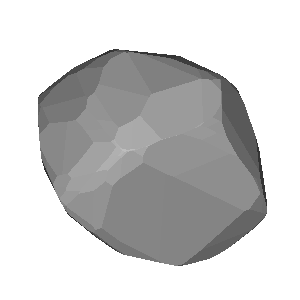2019-09-07 / 4UC 468-100405 / (754) Malabar
| # | OBS | Observer | Occ | Meth. | Instr. | CC | TSRC | UT1 | UT2 | UT3 | UT4 | UT2E | UT3E | Dur. | Chrd |
|---|---|---|---|---|---|---|---|---|---|---|---|---|---|---|---|
| 1 | show | Christophe Ratinaud | O+ | VID | M250 | FR | GPS++ | 21:41:00 | 21:42:56.12 | 21:43:02.68 | 21:43:26 | 0.40 | 0.40 | 6.56 | 83.3 |
| 2 | show | Peter Tickner | O+ | CCD | M356 | UK | GPS | 21:39:30 | 21:42:38.46 | 21:42:43.96 | 21:45:40 | 1.25 | 0.25 | 5.50 | 69.8 |
| 3 | show | Adrian Jones | O+ | VID | M305 | UK | GPS++ | 21:40:46 | 21:42:38.41 | 21:42:43.21 | 21:43:41 | 0.16 | 0.16 | 4.80 | 61.0 |
| 4 | show | John Talbot | O+ | VID | M303 | UK | GPS++ | 21:40:42 | 21:42:36.13 | 21:42:42.53 | 21:44:40 | 0.08 | 0.08 | 6.40 | 81.3 |
| 5 | show | Simon Kidd | O- | CCD | M350 | UK | 21:41:00 | 21:44:30 |
5 observations found in db: euraster
Available (probably) matching predictions (click on the link to switch):| JPL#122 : b7524a7b-1e59-493a-a7a5-94f5988dd84b [db: observed] |
Using prediction b7524a7b-1e59-493a-a7a5-94f5988dd84b for map and profile fit
| Ellipse and circular profile fits to the timings (chords) |
|---|
|
|
Auto-Fit Result: Size = 97 x 71 km a',b' = 48.3, 35.5 km X0,Y0 = -1451.0, 34.6 km Mean diameter = 83 km From 4 chords (VID,CCD) You can enter space separated chord numbers (example: 11 4 8) or a method like VIS to ignore all visual timings, or a time source like RAD and NTP (but not GPS). If the plot disappears, then there are less than 2 chords left (too much ignored, go back with browser). Check SiMDA for size and mass data. Check Johnston Archive for satellites. |
Sky projection (artificial light) for occ. time: 2019-09-07, 21:41 UT (JD = 2458734.403)
| DAMIT | Q | P (h) | λ, β | JD0 | JD-JD0 | φ0 | Version | Modified | Vol-equiv D | Cmnt |
|---|---|---|---|---|---|---|---|---|---|---|
| # 5733 | 1.0 | 11.737 | 334°, -38° | 2.457251e6 | 1483.4 | 0.0° | None | 2020-10-05 | not scaled | 2019-10-23 |

Image size: 300px. Transparent image background for copy & paste
| Map with groundtrack and observer stations |
|---|
| Event Details |
|---|
Occultation UUID [and DB] : b7524a7b-1e59-493a-a7a5-94f5988dd84b [observed] Occultation Date + Time : 2019-09-07 at 21:48:54 UT +/- 59.42 min [1] Object Designation : (754) Malabar Orbit Class : MBA Star Designation : GDR3 4292164061077171584 Star Coordinates (ICRF) : RA = 19 19 04.5228, DE = +03 34 32.198 [2] Star Magnitudes : G = 13.79 mag, RP = 13.17 mag, BP = 14.24 mag Object Magnitude : V = 14.61 mag Estimated Magnitude Drop : 1.2 mag Estimated Max. Duration : 6.9 sec Object Mean Diameter : 88 km (src: astorb) Speed of the shadow : 12.7 km/s Elongation to Moon & Sun : 29° (sunlit = 68%), Sun = 123° Cross-track uncertainty : 0.7 mas = 1 km = 0.01 path-width (1-sig) RUWE and duplicate source : 0.94 mas, dup.src = 0 (0:false, 1:true) Ephemeris Reference : JPL#122 [1] time t0 of closest geocentric approach c/a, [2] including proper motion until t0 |
| More Data and Informations |
|---|
(If error 404: link not valid which means no data available)
| Aladin Sky Atlas |
|---|
| Aladin Lite direct link (has Gaia overlay) |